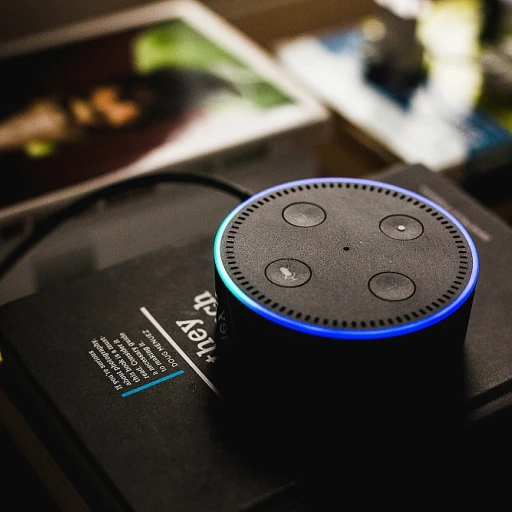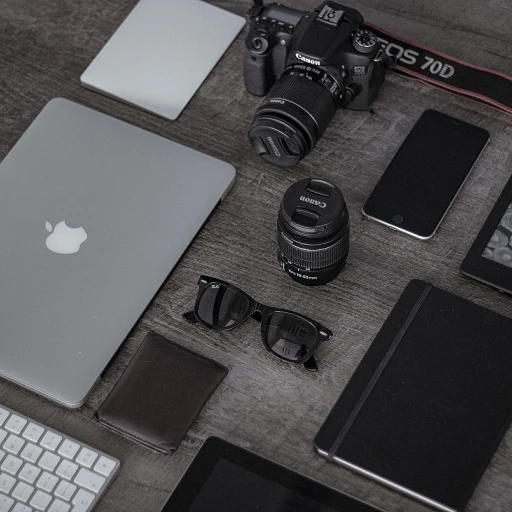
The Evolution of Lightning Connectors
The Journey from Dock to Lightning
The Lightning connector has become synonymous with Apple's iconic design and innovation. Introduced in 2012, it replaced the outdated and bulkier 30-pin dock connector. This transition was not merely a trivial design update; it represented a significant leap in technological advancement and design philosophy for Apple. The evolution of the Lightning cable marks a pivotal moment in Apple's approach to connectivity. By moving to an 8-pin configuration, Apple was able to produce a slimmer port that accommodated the sleek aesthetics of devices like the iPhone and iPad. The Lightning connector not only took less space, paving the way for the ultra-thin profiles of contemporary devices, but also allowed for reversible connections, making it a favorite among users for its ease of use. Embracing this smaller and more efficient connector has led to enhanced data transfer rates and charging capabilities, addressing the needs of various devices, from the iPhone to the generation iPad and iPod touch. It’s important to note the stark contrast between the Lightning connector and the USB alternatives, a topic we'll delve into further in the article. With its white to black aesthetic options, the Lightning connector has not only provided a technical upgrade but also catered to style-conscious users who appreciate seamless blending with their luxury gadgets. This connector is a cornerstone in Apple's strategy to maintain a cohesive and attractive ecosystem for its products, from the iPad mini to the latest iPhone release. While the Lightning connector is celebrated for its contributions, it also sets the stage for understanding newer trends—such as wireless charging and the potential of future connectors. Exploring the impact of Lightning in luxury gadgets, we unravel a journey that is as much about resilience in design as it is about innovation. For those seeking a deeper understanding of Apple's foray into cutting-edge tech, this analysis of the Lightning connector is just the tip of the iceberg. Discover more about luxury tech advancements by reading our blog, Understanding Lumens: Shedding Light on Luxury Tech Gadgets, where we delve into the nuances and brilliance behind today's most coveted gadgets.Decoding the Lightning Connector Pinout
Pin-by-Pin Analysis of Apple's Signature Connection
Deciphering the pinout of a lightning connector is fundamental to understanding its superior functionality and design that has captured the luxury gadget market. The pinout specifications are meticulously crafted to accommodate diverse needs such as data transmission and device charging, all within a compact form.
Each pin in the lightning connector serves a specific purpose. Unlike the old 30-pin dock connector, which was bulky and cumbersome, the streamlined design of the lightning cable resulted in fewer pins that perform more efficiently. This transition aligns seamlessly with understanding TFT displays—a key component in luxury tech gadgets, where less is often more.
The standard lightning connector includes eight pins and can be oriented in either direction, enhancing user convenience. This is a notable enhancement compared to traditional USB cables that have a fixed orientation. Pins are multifunctional, allowing the transmission of both data and power. The two central pins manage data exchange, crucial for fast and reliable data transfers between devices like the iPhone and iPad. Meanwhile, the outer pins focus on audio control and charging, providing a comprehensive suite of connectivity options.
Apple's design emphasizes durability and performance. Each lightning cable is crafted to withstand everyday wear and tear, making it an ideal component for high-end users who demand reliability. Often available in elegant black and white, the aesthetic appeal of the cable complements Apple's sleek devices.
This understanding of the lightning connector pinout reveals why Apple continues to champion its use over other technologies. In the face of wireless charging and evolving USB standards, the lightning connector remains a formidable option due to its versatility and compact design, which is a testament to Apple's commitment to delivering a premium user experience.
In summary, a thorough understanding of how each pin within the lightning connector operates not only illustrates the technological sophistication involved but also highlights why lightning ports remain a preferred choice among luxury tech enthusiasts, maintaining both functionality and style.
Luxury Gadgets and Lightning Connectors
Luxury Meets Lightning: When Every Detail Matters
In the realm of luxury gadgets, attention to detail and seamless integration reign supreme. The apple lightning connector stands as a testament to this ethos, delivering a blend of elegance and functionality that complements high-end devices such as the iPhone and iPad. As we explore its impact on luxury tech, it's clear that these connectors are more than just cables; they're integral components of the sophisticated user experience that defines today's elite tech.
These slim, reversible connectors have gracefully replaced the older dock connector, marking a new era of design where aesthetics meet performance. Unlike the USB counterparts, the lightning cable offers a compact form factor that ensures a tidy connection, maintaining the sleek, minimalistic design language that luxury device users have come to expect.
The precision in the lightning connector's pinout is pivotal for delivering efficient charging and data transfer capabilities. It supports nuanced wiring configurations that accommodate the demands of modern devices such as the latest generation iPad and iPod touches, effectively bridging the gap between style and functionality.
As the landscape of luxury tech continues to evolve, the apple lightning connector's contribution cannot be underestimated. It aligns with other advancements in luxury tech gadgets like wireless charging and has set a benchmark for the seamless integration of technological sophistication into our daily lives.
For a deeper dive into how connectivity solutions like this have reshaped luxury tech, further exploration is available in the luxury tech gadgets arena.
Comparing Lightning Connectors with Other Technologies
Comparative Analysis with Alternate Technologies
The emergence of Apple's Lightning connector was seen as a bold move, setting it apart from the widely used USB standards. With its unique design, Apple's Lightning connector embodies a blend of innovation and luxury, making it a standout among other technological counterparts. One of the primary advantages of the Lightning connector is its reversibility. Users no longer have to worry about plugging in the cable pin the wrong way, an issue often faced with traditional USB connectors. This user-centric feature ensures easier, hassle-free charging and data transfer for devices like the iPhone, iPad, and iPod touch. When comparing the pin designs, Apple's Lightning connector offers a 8-pin configuration, which streamlines both data and power transmission through a single port. This is a stark contrast to some older USB types that feature more complex pinouts, often leading to confusion and compatibility issues. The seamless data flow, across the Lightning USB port, enhances the user experience significantly, which is a crucial consideration in luxury tech devices. Moreover, while USB technology has gone through various iterations—from USB 2.0 to the latest USB 4.0—Apple's Lightning connector continues to stay relevant by consistently integrating new enhancements that cater to modern-day needs and expectations of luxury gadget enthusiasts. The introduction of wireless charging options doesn't eliminate the need for physical connectors but rather complements them, providing versatility in charging methods. Despite its advantages, one pressing challenge is compatibility. Unlike USB cables that are universally accepted across a plethora of devices, Apple’s Lightning connectors are specific to Apple devices. Nevertheless, with a luxury focus, Apple maintains its commitment to an ecosystem that resonates with those valuing aesthetics and high-functionality over ubiquitous compatibility. In conclusion, while the Lightning connector may not match the universal adaptability of USB Type-C connectors, its design and user-centric features uphold its status in the realm of luxury tech gadgets. As we look forward to upcoming advancements, the evolution of these connectors will likely continue to reflect both functionality and the luxury that tech aficionados covet.Challenges in Lightning Connector Design
Design Complexities and Technical Challenges
The lightning connector, a hallmark of Apple’s innovation, is not without its design challenges. As we delve into the intricacies of its pinout, it becomes evident that the connector's compact size and multifunctionality present unique hurdles. The lightning connector, with its reversible design, requires precise engineering to ensure seamless connectivity across various Apple devices, including the iPhone, iPad, and iPod touch.
One of the primary challenges lies in maintaining the integrity of the connector's pins. Each pin within the lightning cable is tasked with specific functions, from data transfer to charging, which necessitates a robust design to prevent wear and tear. The connector's ability to support both data and power transmission through a single port is a testament to its sophisticated engineering, yet it also demands meticulous attention to detail in its construction.
Moreover, the transition from older technologies, such as the 30-pin dock connector, to the lightning connector has required Apple to innovate continuously. This evolution involves not only the physical design but also the underlying technology that supports faster data transfer rates and efficient charging capabilities. The integration of these features into a compact form factor is a significant engineering feat.
Additionally, the compatibility of the lightning connector with various devices, including the latest generation iPad and iPhone models, poses another layer of complexity. Ensuring that the connector functions flawlessly across different devices, each with its own set of requirements, is a challenge that Apple has addressed through rigorous testing and quality control measures.
As we look to the future, the potential shift towards wireless charging and the adoption of USB-C standards present further challenges and opportunities for the lightning connector. The ongoing evolution of technology will undoubtedly influence the design and functionality of future connectors, pushing the boundaries of what is possible in the realm of luxury tech gadgets.












